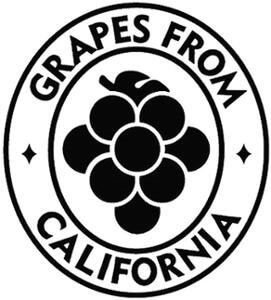The Republic of Peru has appealed a decision from the Australian Trade Marks Office to refuse to grant the country trade mark rights to the word pisco.
The Peruvians sought to register the sign PISCO in Australia by filing an application in 2019. The trade mark examiner refused to accept the mark for registration, so the Republic of Peru sought a hearing before a Delegate of the Registrar of Trade Marks to determine the matter.
Pisco is a high-proof spirit made by distilling grape juice, similar in some ways to grappa. According to the evidence filed in the case, pisco originated in Peru more than 450 years ago and is made using particular local grape varieties found near the Peruvian port town of the same name.
The Republic of Peru sought registration of the term as a certification trade mark (CTM) in relation to alcoholic beverages – except beer. A CTM differs from a standard trade mark as it distinguishes goods or services that are certified pursuant to a set of rules or standards from goods or services that are not certified. A standard trade mark distinguishes the goods of one trader from those of another.
There are currently just over 550 registered certification trade marks on the Australian Trade Marks Register including for the marks IRISH WHISKEY, PARMA HAM and GRAPES FROM CALIFORNIA – pictured below.

If the Peruvians were granted the certification trade mark registration for PISCO, this would restrict the use of the term PISCO to spirits that had been certified by the Peruvian authorities as meeting certain requirements, including coming from the Pisco region. This would mean that pisco from other parts of Peru and Chile (where it is also made according to the Delegate) could no longer be sold by reference to that trade mark without infringing the Peruvian’s rights.
CTMs are subject to different requirements for registration under s.177 of the Trade Marks Act 1995 (Cth).
As noted by the Registrar’s Delegate in this decision:
The differences in the statutory tests reflect the particular distinguishing function that a certification trade mark plays with regard to quality or characteristics of the relevant goods, as opposed to a distinguishing function in relation to trade origin.
Under s 177(2), there are three factors that are relevant to determination of capacity to distinguish of a certification trade mark, namely (i) the extent to which the certification trade mark is inherently adapted to distinguish, (ii) the extent to which, because of use, the certification trade mark has become adapted to distinguish, and (iii) the extent to which because of any other circumstances, the certification trade mark has become adapted to distinguish. These matters must be considered in the context of the certifying function performed by a certification trade mark, including in cases where a certification trade mark is a GI.
The Delegate applied s 177(2) and found the PISCO mark was not inherently adapted to distinguish. In reaching this decision, the Hearing Officer referred to evidence of many spirits sold and advertised in Australia under the mark Pisco that originated from various regions in Chile, not just the Pisco region. As a result, the Delegate ruled the ordinary signification of the mark was of spirit from Chile or Peru, rather than one from the Pisco area in Peru and that other traders would have a legitimate desire to use the mark.
The next question under s 177(2) was whether because of use of the mark in Australia by the Republic of Peru, or other circumstances, the mark had become adapted to distinguish with the result that the Peruvians should be granted registration.
The Delegate identified two main issues with the evidence filed to support the Peruvian’s case on these points. Firstly, whilst some evidence showed use of the term PISCO as a trade mark, other uses were descriptive. As a result, the Hearing Officer found it difficult to assess whether Australian consumers recognised the term PISCO as indicating that the product had been certified by the Peruvian authorities, as opposed to a descriptive term.
The second issue was the lack of evidence as to the size of the market for the product in Australia. The Delegate was unable to assess the size of the market in Australia in which the pisco mark operated to distinguish goods certified from those not certified due to a lack of evidence of sales. Thus, the Delegate was not satisfied the mark had through use become adapted to distinguish.
The Peruvians sought to establish that there were other circumstances under s 177(2) that meant the mark should be registered namely, the status of the PISCO trade mark as geographical indication (GI). Pisco had been officially declared an Appellation of Origin in Peru in 1990 by the Peruvian government, and in some other jurisdictions was recognised as a GI. However, following on from the earlier decision in relation to the BASMATI certification mark, the Delegate held that it was not the role of the Hearing Officer to determine whether the mark should be protected as a GI.
Thus, registration of the mark was refused although the decision has been appealed.
Certification trade marks are proving fertile ground for trade mark lawyers. This decision follows the unsuccessful attempt by the Indian government to obtain a certification mark for BASMATI which is also presently on appeal.

